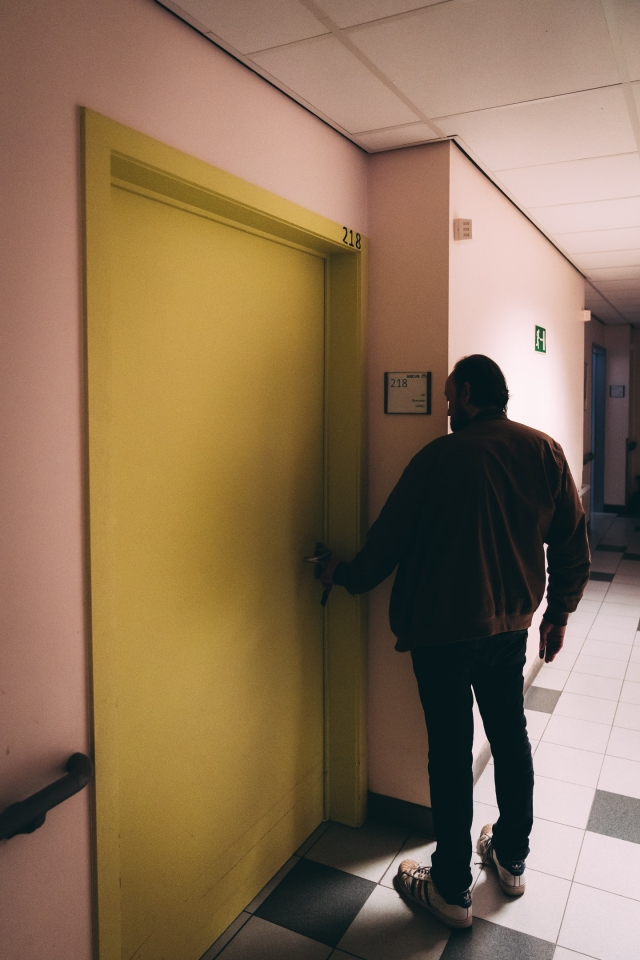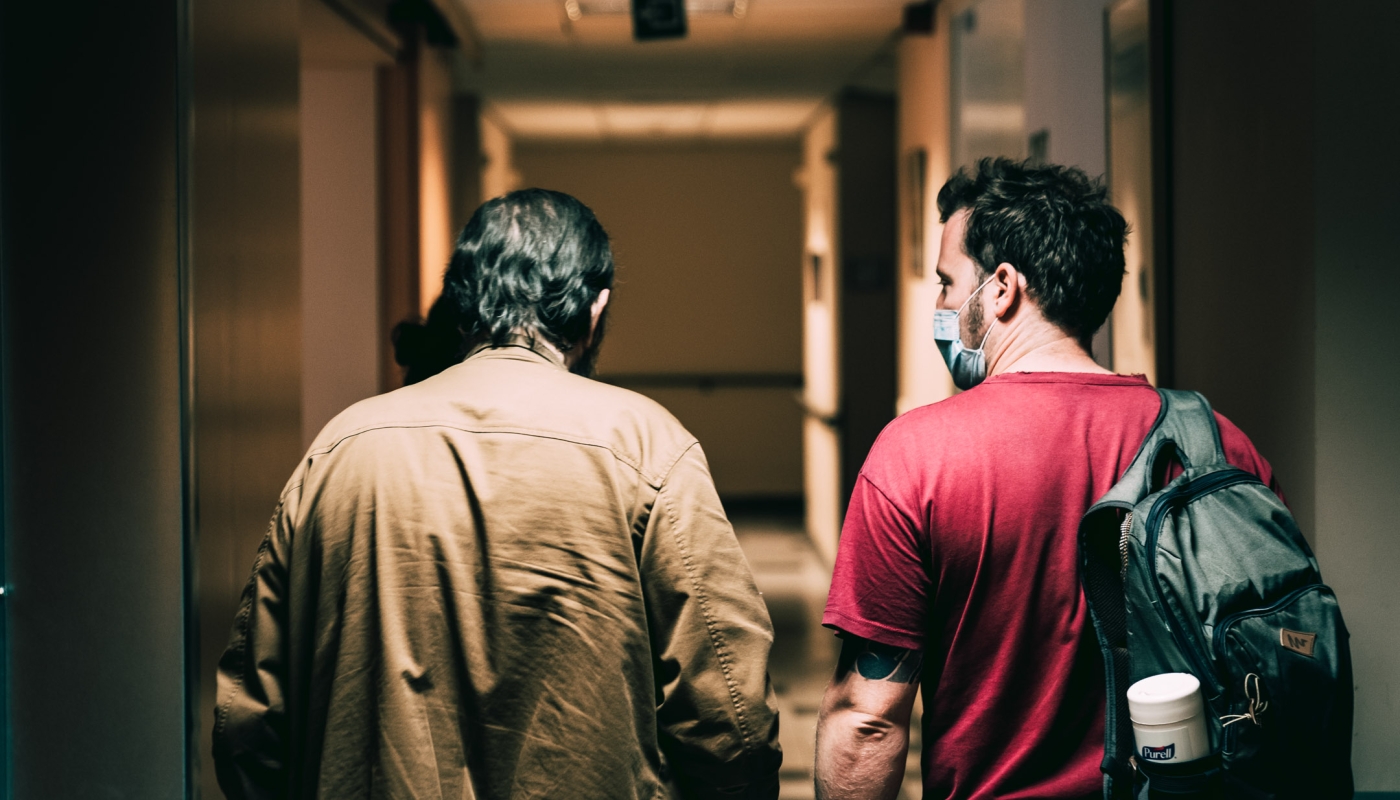Last week, Mr. E. was told he had throat cancer. But faced with the news, he remained stoic. It takes more to upset him after having lived on the street for twenty years and having experienced about everything under the sun.
For better or worse, he kept going for many years thanks to the carapace he made himself to survive on the street.
After a particularly difficult night, he once told us: “Sometimes I am a real mess inside. When I am sad, I think of my wife…and then I scream at night among the trees to get rid of all that tortures me inside. I scream as long as it takes to get rid of it all.”
When I ask myself why I want to do this work, I think it’s really because of the strength the patients give us. These people survive even after a particularly difficult life. You must be very strong to live on the street – and equally strong to abandon it.

When Mr. E. told a psychiatrist the outline of his life’s journey, the latter interrupted him: “Twenty years on the street? Incredible. How did you manage?” His reply: “Well, uh, I don’t know myself.”
Whenever the media mention clochards and homeless people, they do so always in negative terms only describing what they’re missing: lack of a home, a place to stay, contacts, money…
That shows very little respect for the deeply human side of these people – who are no doubt stronger than most of us.
If, today, I hear the ingrained prejudice, when people talk about the “homeless” who “don’t desire anything else” and who “are happy on the street”, I know what to answer: “they are still holding out”. Which is quite an achievement in itself.
These people keep going where others would have quitted long ago. Which they will be condemned to do for many years to come if politics regarding homelessness do not change.
Mr. E. will have to muster all his forces for the many medical tests and treatments of his cancer. But I have no doubt that he will manage.
-
(*) We do our utmost to respect the privacy of our patients and our professional secrecy. However, we want to testify to how they must survive and how we are working together to reintegrate them. As a result, the names of places and people are deliberately omitted or changed and real-life situations are placed in a different context. There is no direct link between the photos and the stories above.

